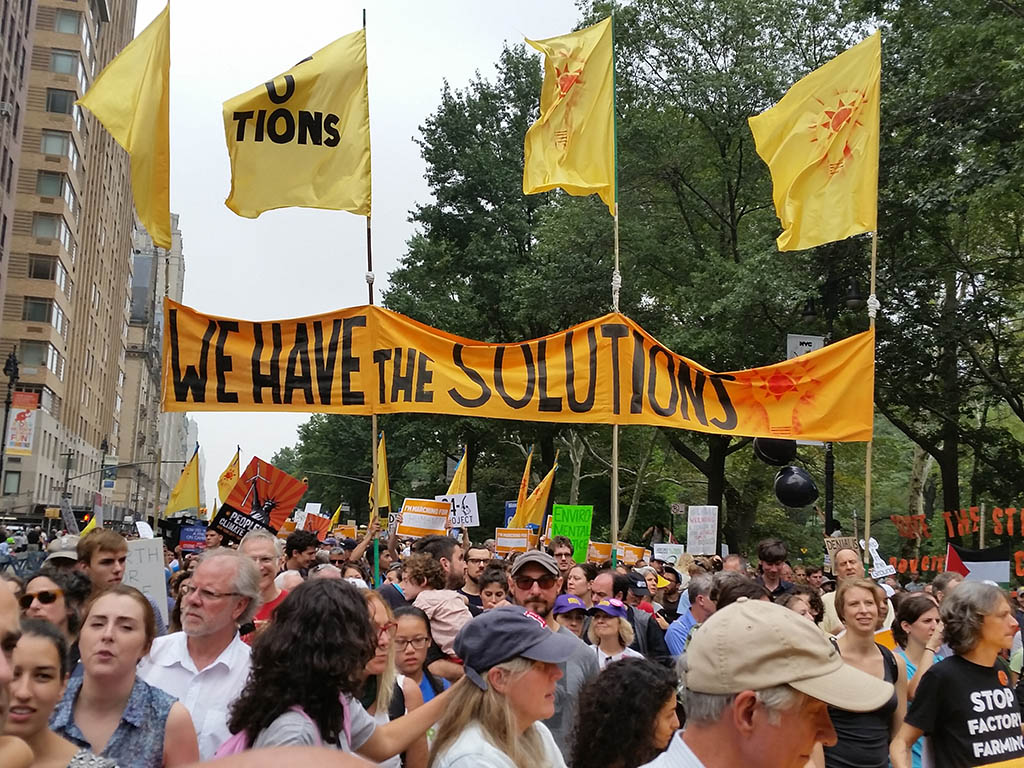The UN Climate Summit had its ups and downs (China being one the downers) but some of the accompanying events left me feeling more optimistic. First, of course, was the People’s Climate March, the largest environmental protest in history. I began the march with a contingent from The New School (where I teach), but when we finally began marching (lined up on 72nd Street, it was two hours before we began walking on Central Park West) I found myself just ahead of the area that included architects walking under the banner “We Have the Solutions.”
That slogan – a fact, really – was reinforced at a talk at the Center for Architecture early Thursday morning. The speaker was Edward Mazria, founder of Architecture 2030. Mazria has been in the ecodesign world longer than almost anyone around. In my book, Sustainable Design: A Critical Guide, I called him “a green architect before such a term existed.” (He’d probably hate that description.) He came to prominence when, in 2003, he crunched some energy numbers and determined that buildings – and hence architects – were responsible for a much larger percentage of total energy consumption than anyone realized.
The numbers were published in Metropolis magazine. Susan Szenasy, who moderated Thursday’s talk and is the editor and publisher of Metropolis, said she initially took a lot of flak for placing the blame on architects. But as Mazria pointed out – at one point with a slide that just read “opportunity” in huge type – it also meant architects, along with building owners and others, have the ability to have a huge impact.
Building design and construction fall into two categories: new construction and renovation. And it’s the latter that holds some of the greatest potential because there is so much existing building stock relative to new buildings, and most of it is in need of energy upgrades. Remaking 2% – 3% of building stock per year using best practices would put us on the necessary path toward a net-zero energy goal. As this is close to the current rate of renovation, the idea, Mazria said, is “eminently doable.”
In a previous post, I wrote that architects – as polymath optimists – are uniquely suited to helping devise and advocate for the solutions we need. (Or, as the banner at the People’s Climate March observed, the solutions we already have.) The take away from Mazria’s exuberant talk was that architects have a pivotal role in determining our future. Indeed, the event was titled, only slightly hyperbolically, “Design! Life Depends on Us.”
Mazria observed that architects and planners have done this before when modernism, for all its faults in hindsight, helped bring cities out of the grime of their unhealthy 19th century state. It’s a profoundly EcoOptimistic point that architects can be one of the major forces in achieving the necessary goal of eliminating our production of greenhouse gases.


